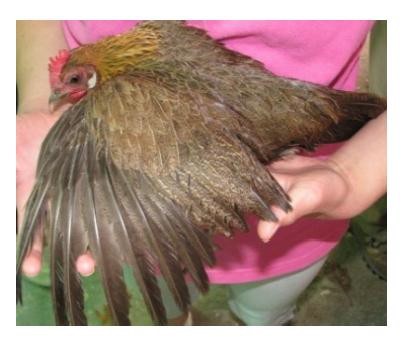Poultry Showmanship Guidelines
POULTRY SHOWMANSHIP
Acknowledgement: The information for this section is based on the Utah State University Cooperative Extension publication “What is Expected of the Poultry Showman?”
Showmanship is an exhibitor focused activity. The bird serves as a prop, while the exhibitor does the performing. The young person’s attitude, appearance, speaking ability, care and management skills, and willingness to follow instructions are all on stage.
For Showman 5th grade and under, instructions given by the judge are usually brief and to the point, covering personal safety and well- being of the bird. Appropriate skills include carrying and posing the bird properly and placing and removing the bird from the cage. Exhibitors should be able to answer questions about basic management, simple anatomy, and they should know the breed, variety, gender, and class of the bird.
For Showman in grades 6 through 8, instructions can be more detailed. Appropriate skills include all of the skills for 5th grade and under plus passing the bird, examining the wings, under-color, feet and head. They should be able to do a physical examination and an oral evaluation of their bird. Exhibitors should be able to answer questions about poultry diseases, parasites, defects, disqualifications, and additional anatomy.
For Showman in grades 9 through 12, instructions can be very specific. Appropriate skills include three handling skills and 9 evaluation skills. They should be able to answer any question given to them about the poultry industry. The novice showman would be expected to show the handling abilities and knowledge of the 5th grade and under.
Showing Poultry
Showing Procedures
NOTE: The judge may ask exhibitors to come the table one at a time or they may ask all exhibitors to bring their animal to the show table and line up all at once. You should be comfortable with both methods.
Exhibitors of poultry should know and be able to present their bird following the poultry showmanship steps.
- Caging and carrying the bird. When you cage your bird, always cage it and uncage it headfirst. Bird should be kept balanced and upright on the palm of the hand. The other hand rests on the bird’s back.
- Posing the bird. Bird should be posed in an alert position with tail fluffed, head and beak raised, feathers smooth, wings in normal position.
Examination steps of the bird for the judge
- Examining the head. Bird should be raised to shoulder height with the free hand used to move the head and point to the following parts: comb, beak, wattles, earlobes and he
- Examining wings. Starting with the bird's right wing, carefully grab at the wrist and the wing will
unfold with a gentle tug. Check for all primaries and secondary feathers, check the
axial feather, check for wing mites and/or lice, check for proper color and size.
Let go of the wing and smooth it out. Repeat for the other wing.

- Examining undercoat. Fingertips are used to gently pull tops of feathers against the grain. Check for proper color of skin and fluff, check for lice and mites.
- Showing width of body. Place your thumb and pointer finger in both wing pits and run your hand down the body. Show the judge your measurement.
- Checking the breast. This step requires you to hold the bird upside down or on its side while maintaining complete contr Turn the bird towards you, turn the bird upside down. Carefully grab the hocks with one hand while supporting the breast with your other hand. When you feel your bird is ready, take your free hand and feel the keel bone. Examine for straightness, breaks and breast blisters. Show the judge the length of the keel using your thumb and index finger.
- Checking the vent. The vent is usually checked on egg production breeds. Slip the bird under your arm so that the vent is facing outward. Lift the tail, blow on the fluff, and check for mites, cleanliness, and signs of illness.
- Measuring depth of abdomen. You are looking for the end of the keel bone and the 2 pubic bones. Place as many fingers as possible between the end of the keel and the pubic bones and show how many figures fit between the bones to the judge.
- Measuring width of pubic bones. Finding the two pubic bones, fit as many fingers between them as possibl Show the judge your measurement. This is an indicator of the productivity of the bird.
- Examining feet and legs. Check the bottom of the legs first, and then the fron You are checking for cleanliness, absence or presence of stubs, absence or presence of scaly leg mites, condition, appropriate color for the breed/variety, etc.
General Showmanship Guidelines
- Practice with your bird the proper way to handle the bird and the steps in bird examinat Study about the poultry industry and how to care for your poultry project. This will help you in preparing for questions that may be asked during the showmanship contest.
- Exhibitors should have a positive attitude, the ability to focus attention, and show respect for the judge and other participants.
- Remember that poultry showmanship is the opportunity for you as a young exhibitor to demonstrate your abilities as a poultry steward and to communicate your knowledge of the poultry industry.
- Refer to all other General Showmanship Guidelines on pages 1-3 and your county or show rules.
